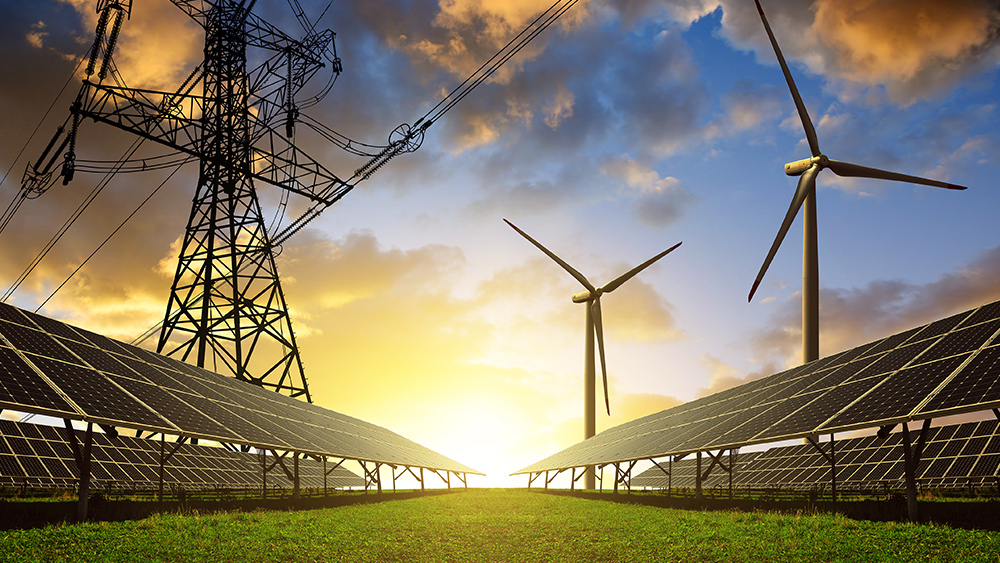Renewables fall short as fossil fuels reach new heights: Global energy transition stalls
07/10/2025 / By Willow Tohi

- Fossil fuels hit record highs in 2023, with coal consumption surging 9% globally, undermining climate goals.
- Renewables provide minimal grid replacement and instead add to rising energy demand, worsening emissions.
- Asia-Pacific nations like China dominate energy consumption growth, relying on coal despite renewables expansion.
- Transition costs for storage and infrastructure increase energy prices, risking public backlash against green policies.
- Experts argue advanced nuclear technologies, not renewables alone, offer a viable path forward to curb emissions.
Global fossil fuel consumption hit a historic high in 2023, growing 1.5% even as solar and wind capacities expanded. The BP Statistical Review of World Energy reveals fossil fuels still supply 81.5% of the world’s primary energy, with coal demand spiking 9% — despite pledges to curb emissions. Analysts warn “the transition hasn’t even crossed the start line” as renewables fail to displace fossil fuels, merely piggybacking on rising energy demand. With carbon emissions up 1.1% globally last year, the data underscores a stark reality: The world may be deeper into its climate targets than its transition effort.
Asia-Pacific’s energy dilemma: China’s coal surge reinforces reliance on fossil fuels
China, the world’s top coal consumer, accounts for 56% of global coal use and spearheaded 85% of 2023’s energy demand growth, largely to power its manufacturing and urbanization. While Beijing invests heavily in wind, solar and nuclear (hosting 26 of 60 global reactors under construction), its energy mix remains coal-dependent. In 2023 alone, China launched 70 gigawatts of new coal plants — 18 times the rest of the world’s combined total. India, the seventh-largest carbon emitter, follows suit, planning to triple coal capacity by 2030.
“The public often overlooks that energy poverty remains a human rights issue,” says Anna Mikulska of the Institute for Defense Analyses. With 750 million globally lacking electricity, nations like India chose coal to avoid blackouts after multi-state outages in 2012. “It’s better to have access to coal than no access at all,” she adds.
The cost equation: Renewables fall short on storage, driving up energy prices
Despite glowing headlines, wind and solar contribute minimally to grids. In the U.S., renewables supplied just 14.1% of 2023’s electricity — far from zero emissions by 2050. Meanwhile, solar farms and turbines struggle to replace baseload energy, forcing reliance on fossil fuels to offset intermittency. Europe’s energy crisis, highlighted by soaring gas prices, underscores this flaw: After a “wind drought” left renewables lacking, Germany burned record amounts of coal to stabilize its grid.
Ample renewables, without storage, add unpredictability. Experts estimate batteries must drop 90% in cost to rival gas — a distant prospect. Green hydrogen faces even taller odds, unlikely to achieve cost parity before 2050. Analysts warn the upgrade to low-carbon infrastructure, including 50% more transmission lines and costly pumped-storage hydro plants, will strain budgets. The International Energy Agency projects $30.3 trillion in clean energy investment needed by 2030 — a figure rivaling global defense spending.
Historical parallels reveal public unease over rising costs. France’s 2018 Yellow Vest protests, triggered by fuel tax hikes, shut down the country. Today, EU leaders frantically revive coal plants and roll out subsidies to suppress backlash. “Public buy-in hinges on honesty,” says University of Chicago economist Ryan Kellogg. “Overselling renewables as ‘free’ risks political collapse when bills rise.”
The policy paradox: Green energy promises clash with economic realities
Market signals further undermine climate optimism. Investor trust wavers as oil giants like Saudi Arabia and Russia dominate energy geopolitics. Despite $674 billion annually poured into fossil fuels, green subsidies and tax credits have done little to shift corporate bottom lines. Oil firms continue to book coal and gas reserves worth 2.8 trillion tonnes — far exceeding the 886-tonne carbon budget to limit warming to 2 degrees Celsius.
Environmental policies, such as the EU’s carbon pricing, face backlash. Carbon Tracker Initiative reports “unburnable” reserves could devalue oil company valuations by $4 trillion — a threat the Bank of England calls existential. Yet market structural flaws persist: thanks to geopolitical realities and subsidies, fossil fuels remain reliable and cheap to produce.
The path ahead: Pragmatism or peril in energy transition?
Solutions, analysts insist, require pragmatism — not ideology. “Nuclear power is the ultimate test case,” says Nick Wayth of the Energy Institute. Small modular reactors (SMRs), designed for mass production like WWII-era Liberty ships, could finally rival coal and gas in cost and speed. The U.S. and China are now racing to commercialize SMRs, which promise predictable baseload power with near-zero emissions.
Meanwhile, global disparities demand balance. Developing economies “will not forfeit growth for emissions cuts,” says India’s former Environment Minister Bhurender Pallikadiyil. “Half of India’s per capita emissions reflect Western outsourcing of overconsumption.” For billions, energy access trumps climate dogma—an inconvenient truth for activists.
Without pragmatism, the green dream risks eternal disappointment
The energy transition has yet to escape the starting blocks. Coal’s stubborn grip and renewables’ technical limits force a painful reckoning: Climate goals require more than wishful thinking. As China builds coal plants and Europe pays record gas bills, it is clear that innovation—not mandates—will determine success. Without breakthroughs in storage, cost-effective nuclear and honest cost accounting, the dream of a clean energy future risks becoming another renewables mirage.
Sources for this article include:
Submit a correction >>
Tagged Under:
big government, Clean Energy, climate change, Collapse, debt bomb, electricity, energy supply, environ, fuel supply, green living, Green New Deal, green tyranny, new energy report, nuclear, power, power grid, progress, renewables
This article may contain statements that reflect the opinion of the author
RECENT NEWS & ARTICLES
COPYRIGHT © 2017 COLLAPSE.NEWS
All content posted on this site is protected under Free Speech. Collapse.news is not responsible for content written by contributing authors. The information on this site is provided for educational and entertainment purposes only. It is not intended as a substitute for professional advice of any kind. Collapse.news assumes no responsibility for the use or misuse of this material. All trademarks, registered trademarks and service marks mentioned on this site are the property of their respective owners.





















